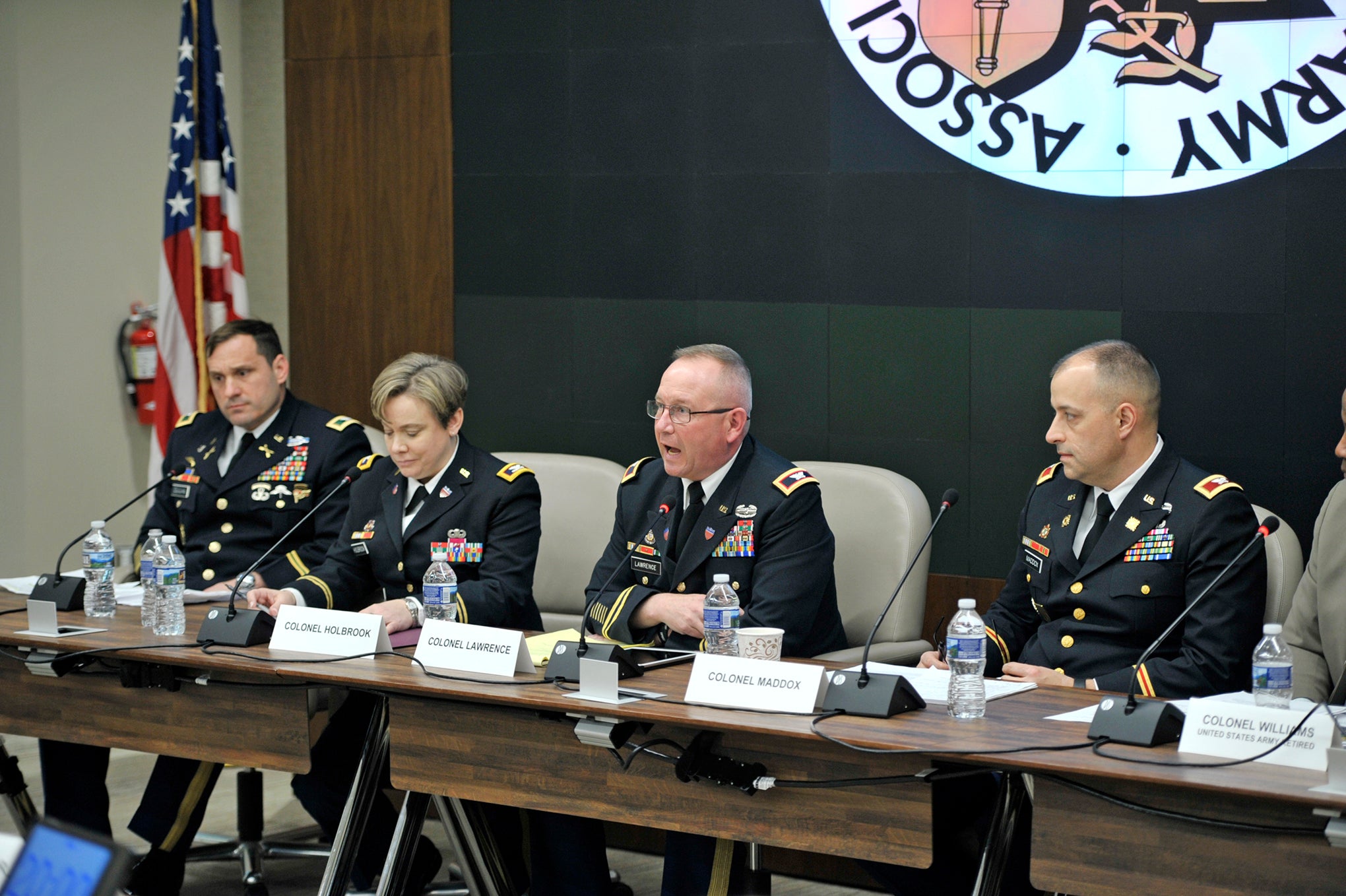Garrison commanders discuss energy, security, facilities
Garrison commanders discuss energy, security, facilities
Garrison commanders from around the Army discussed the ways installations affect readiness to include energy, security, and facilities, at the Association of the U.S. Army’s Hot Topic forum on installation management held at the AUSA Conference and Event Center in Arlington, Va.
Readiness, the number one priority of Army Chief of Staff Gen. Mark Milley, “begins on installations,” said Davis Tindoll Jr., who serves as director, IMCOM Sustainment Directorate, U.S. Army Installation Management Command.
Garrison commanders have two primary tasks in support of readiness, Tindoll said: sustaining installation facilities, and providing base operations and support (BASEOP) services.
“There are somewhere in the neighborhood of 56 BASEOP services, ranging from running a golf course, to issuing ID cards, to making sure you have access control at the gate,” he said.
Col. John Lawrence, garrison commander, Fort Riley, Kan., explained his installation’s efforts on Net Zero, an energy-conserving program encouraging installations to only use as much energy as they create.
“When we talk Net Zero, you have to look at facilities,” Lawrence said.
At Fort Riley, he said, the electric and gas rates are already the lowest in the Army, so the primary focus is on improving water reclamation. “It comes down to knowing what resources you have, and implementing those for savings.”
The Army also needs to improve installation security, said Col. Patrick Duggan, garrison commander Joint Base Fort Myer – Henderson Hall, Va.
“How much more brick, mortar, razor wire fences and guards do we need?” he asked, adding that “physical security only keeps the curious out.”
In the future, installation security will be less about what is visible than what is unseen, Duggan said.
The Army needs “better preparation against the emerging threats of virtualization, abstraction and miniaturization” such as miniaturized drones, unmanned boats and cars strapped with homemade bombs, and cyberattacks.
The bottom line, he said, is linear solutions like guards and fences are being applied to nonlinear threats, and a more holistic approach is needed, “changing the way we support, sustain and – most importantly – defend.”
Facility priorities should be focused on the needs of the senior mission commander, “what he wants to do for the readiness of his soldiers,” Lawrence said. At Fort Riley, this meant improving the conditions of mission training facilities – live, virtual and constructive.
“In other words, I have a battalion in the field, I’ve got personnel on a simulator, and then I’ve got people in gaming” all linked to one system where the brigade commander can see all three elements on a map without telling the difference, Lawrence said.
Presenting a clear picture of an installation to senior leadership is also important, said Col. Angelia Holbrook, Fort Belvoir, Va., garrison commander. Plans must “correctly depict the situation” to avoid issues with manpower and available space.
Holbrook also discussed the continuing work on the National Museum of the United States Army, saying, “The construction of the museum will be a significant boost to the installation and the economy of south Fairfax County.”
Col. Edward “Deacon” Maddox, garrison commander, Letterkenny Army Depot, Pa., said his installation is feeling pressure from the current government hiring freeze. Getting people to “fill the workload the workload and generate combat power is becoming difficult,” he said.


